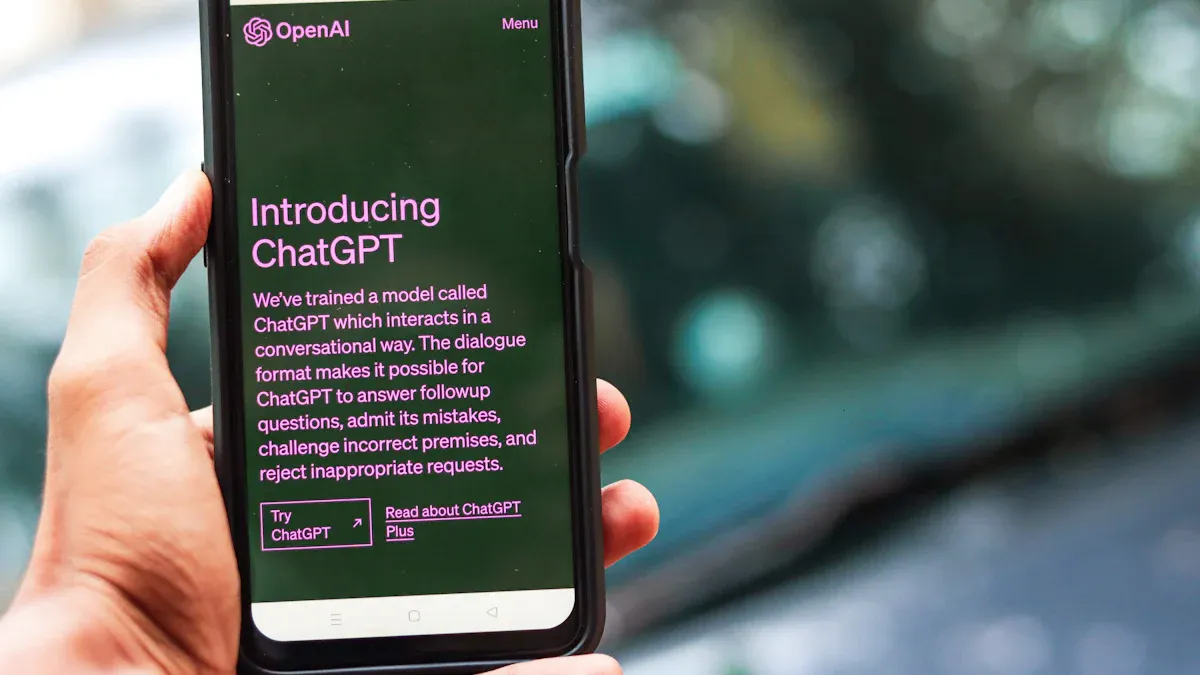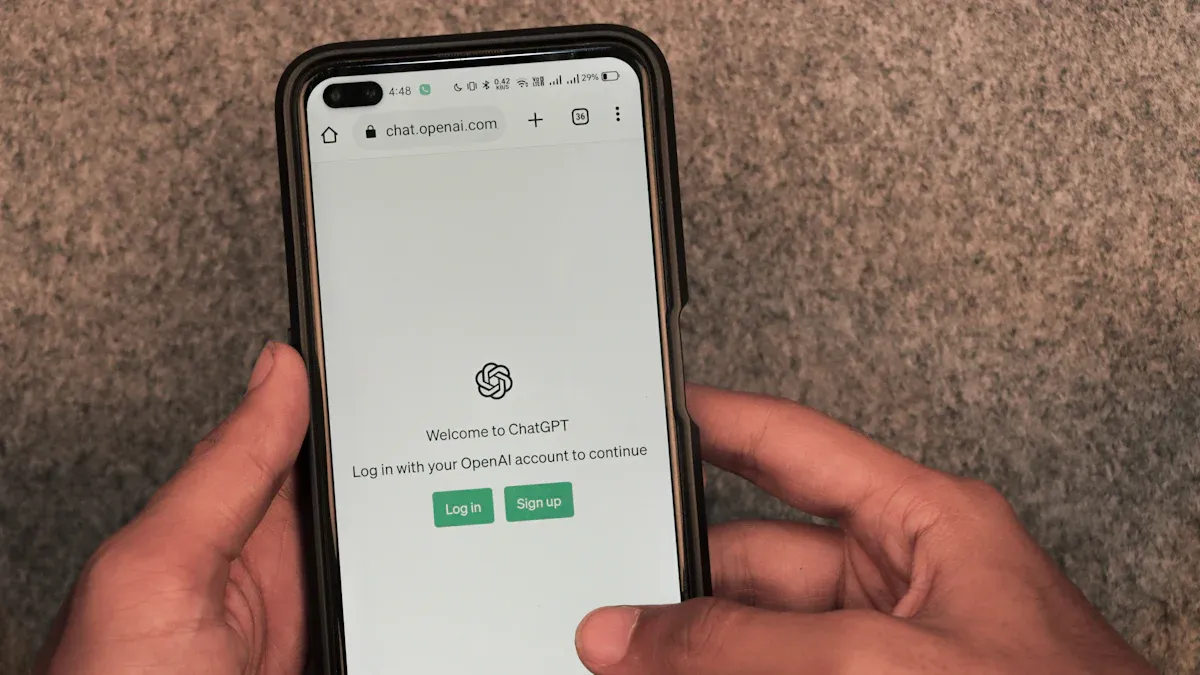How to Customize ChatGPT with Your Personal Data

Imagine having an AI chatbot that understands your unique needs and speaks your language. By training ChatGPT with your personal data, you can create your own chatgpt that delivers responses tailored to your specific requirements. This customization improves relevance and accuracy, making interactions feel more personal. For example, companies like Octopus Energy have used GPT-powered chatbots to handle 44% of customer inquiries, reducing the need for human support.
The process is simpler than you might think. Tools like APIs, Newoaks AI, or even no-code platforms like Bland AI make it easy to upload your data and fine-tune the chatbot. Whether you're a tech expert or a beginner, there's a solution for everyone. Ready to learn how to train chatgpt and unlock its full potential?
Key Takeaways
Make ChatGPT work better for you by using your own data. This helps it give more useful and accurate answers.
Follow easy steps: get your data ready, get API keys, train ChatGPT, and check how well it works.
Look at real-life examples to help you. For example, you can make customer service better or give personal suggestions.
Keep your data clean, organized, and well-structured so the chatbot works its best.
Test your chatbot often and improve it. This makes sure it works the way you want.
What is ChatGPT Customization?
Understanding Customization
When you customize ChatGPT, you’re essentially tailoring the AI to meet your specific needs. Unlike the standard version, which relies on general training, customization allows you to train ChatGPT on your own data. This process involves modifying the model to handle unique inputs and deliver responses that align with your goals.
Think of it as teaching ChatGPT your language, preferences, and priorities. By feeding it specialized datasets, you can make it smarter and more relevant for your audience or application.
For instance, a company might train ChatGPT to understand industry-specific jargon or customer preferences. This ensures the chatbot provides accurate and meaningful responses, making it a valuable tool for businesses, educators, and even personal use.
How to Train ChatGPT on Your Own Data
Training ChatGPT on your own data might sound complex, but it’s more straightforward than you think. Here’s a step-by-step breakdown:
Prepare your dataset in JSONL format.
Obtain API keys to access OpenAI’s fine-tuning tools.
Train the model using diverse examples from your dataset.
Evaluate the model’s performance to ensure it meets your expectations.
Before you start, make sure your data is clean and well-organized. Remove unnecessary information, correct errors, and label everything clearly. Once the training is complete, test the chatbot thoroughly. Use different scenarios to see how well it performs and refine it as needed.
Use Cases for a Custom-Trained ChatGPT AI Chatbot
Customizing ChatGPT opens up endless possibilities across industries. Here are some real-world examples:
Customer Service: Companies like Octopus Energy use GPT-powered chatbots to handle nearly half of their customer inquiries. This reduces the need for human intervention and speeds up response times.
Education and Engagement: A media startup created a virtual companion to provide emotional support, language practice, and even entertainment.
Personalized Recommendations: A cosmetic retailer developed an app that analyzes selfies to suggest skincare products tailored to individual needs.
These examples show how you can customize ChatGPT to solve specific problems, enhance user experiences, and even create entirely new applications.
Why Train ChatGPT with Your Data?
Benefits of Customization
Customizing ChatGPT with your data can make it a game-changer for your needs. Instead of relying on generic responses, you can train it to deliver answers that are accurate and contextually relevant. This means better conversations and more efficient interactions.
Here’s why customization is worth it:
Training ChatGPT on your unique data, like company policies or FAQs, turns it into a personalized virtual assistant. It can handle customer queries with ease and improve engagement.
Fine-tuning the model ensures responses are tailored to your specific use cases. This leads to more precise and engaging interactions.
Customization enhances operational efficiency by reducing repetitive tasks and providing faster, smarter solutions.
Imagine having a chatbot that understands your business inside out or one that knows your personal preferences. That’s the power of training ChatGPT with your data.
Real-World Applications of Custom-Trained ChatGPT
Custom-trained ChatGPT models are already making a big impact across industries. They’re helping businesses and individuals solve problems in innovative ways.
Here are some examples:
Koo, a social media platform, uses GPT to simplify post creation, boosting user engagement.
Duolingo offers a premium feature powered by GPT, allowing users to practice real-world conversations and improve language skills.
Octopus Energy manages 44% of customer inquiries with GPT-powered chatbots, reducing the need for human staff and saving resources.
Morgan Stanley uses a fine-tuned GPT model to help 16,000 financial advisors analyze research data, improving customer service and decision-making.
These examples show how a custom-trained ChatGPT can transform industries, enhance user experiences, and even create new opportunities. Whether you’re running a business or looking for personal solutions, the possibilities are endless.
Step-by-Step Guide to Train ChatGPT on Your Own Data

Preparing Your Data
Before you start training ChatGPT, you need to prepare your data carefully. This step ensures the chatbot learns effectively and delivers accurate responses. Here’s how you can get started:
Remove unnecessary information: Eliminate duplicates and irrelevant details from your dataset.
Correct errors: Fix typos, inconsistencies, and formatting issues. Tools like OpenRefine can help you clean up your data efficiently.
Organize and label data: Structure your data clearly, so the chatbot understands the context better.
Once your data is clean, follow these steps:
Collect and select relevant data: Identify sources that align with your chatbot’s purpose.
Curate high-quality data: Use only the most pertinent information for training.
Preprocess the data: Format it properly to ensure smooth integration.
Split the data: Divide it into training and validation sets for better performance.
Taking these steps will set a strong foundation for training ChatGPT with your data.
Uploading and Integrating Data
Now that your data is ready, it’s time to upload and integrate it into the ChatGPT model. This process ensures the chatbot learns from your unique dataset and tailors its responses accordingly. Here are some best practices to follow:
Tailor responses: Train the chatbot on specialized datasets to meet your audience’s needs.
Integrate external knowledge bases: Enhance the chatbot’s understanding by connecting it to reliable sources.
Ensure data consistency: Regularly verify and update your data to maintain accuracy.
Implement security measures: Protect sensitive information during the upload process.
To upload training data, subscribe to ChatGPT Plus and create a custom model. Then, configure the settings to match your goals. Finally, upload your clean and organized dataset. This step ensures the chatbot aligns with your specific requirements.
Testing and Refining the Model
Testing is a crucial part of the training process. It helps you evaluate how well the chatbot performs and identify areas for improvement. Use these methods to test and refine your ChatGPT model:
Method | Description |
|---|---|
Executing test scenarios | Feed prepared test data into the model to observe responses across different inputs. |
Analyzing test results | Evaluate metrics like accuracy and relevance to pinpoint weaknesses. |
Validating performance | Check responsiveness and consistency to ensure the chatbot meets your benchmarks. |
Incorporating user feedback | Gather insights from users to improve usability and relevance. |
Iterative testing approach | Continuously refine the model based on feedback and testing outcomes. |
Testing and refining the model ensures your chatbot delivers a seamless customer experience. Keep iterating until you’re satisfied with its performance.
Publishing Your Custom-Trained ChatGPT AI Chatbot
Once your custom-trained ChatGPT AI chatbot is ready, the next step is to publish it. This process ensures your chatbot is accessible and functional for your intended audience. Whether you're using it for customer service, education, or personal projects, publishing makes your chatbot available for real-world use.
Here’s how you can publish your custom AI chatbot:
Choose a Platform: Platforms like Denser.ai make it easy to deploy your chatbot. Start by creating a new chatbot on the platform.
Upload Your Data: Select the files you used for training and upload them. Click "Build Now" to finalize the process.
Set Up API Integration: If you're using OpenAI's API, fine-tune your model with your data. Then, integrate it by setting up API calls to interact with your chatbot.
Install Necessary Tools: For advanced users, install Python and upgrade Pip. Add essential libraries like OpenAI, GPT Index, PyPDF2, and Gradio to enhance functionality.
Test and Iterate: Before launching, test your chatbot in a beta phase. Gather feedback from users and refine it to improve performance.
Publishing your chatbot also involves ensuring it aligns with your goals. For example, if your chatbot uses a custom knowledge base, verify that it delivers accurate responses. A well-published chatbot can transform how you interact with your audience, making it a valuable tool for businesses and individuals alike.
Pro Tip: Use platforms that support seamless integration and updates. This ensures your chatbot stays relevant and effective over time.
By following these steps, you can confidently publish your custom-trained ChatGPT AI chatbot and start reaping its benefits.
Best Practices for Optimizing Your Data

Ensuring Data Quality
When training your chatbot, the quality of your data plays a huge role in its performance. Think of it this way: if you feed your chatbot messy or irrelevant data, it’s like teaching someone with outdated textbooks. To get the best results, you need to optimize your training data. Here’s how you can ensure top-notch quality:
Keep your data consistent and accurate to maintain the integrity of your chatbot’s responses.
Regularly verify your data and implement quality control measures to catch errors early.
Curate your training data carefully. Make sure it’s clean, diverse, and contextually relevant.
Avoid biases by including a wide range of examples in your dataset.
By focusing on these steps, you’ll create a personalized ChatGPT chatbot that delivers accurate and meaningful responses every time.
Structuring Data for Better Results
The way you organize your data can make or break your chatbot’s performance. A well-structured dataset helps the model understand context and deliver better answers. Here are some tips to structure your data effectively:
Collect relevant data from diverse sources to give your chatbot a broader understanding.
Remove duplicates and irrelevant content to keep your dataset clean.
Use a standard format, like conversational pairs or input-output sequences, for consistency.
Segment your data into training, validation, and test sets to evaluate performance accurately.
Maintain a consistent tone and style throughout your dataset for a cohesive chatbot personality.
When you structure your data properly, you make it easier for tools like the ChatGPT API to process and learn from it. This step is crucial if you want to create a custom GPT that truly meets your needs.
Security and Privacy Considerations
Using ChatGPT custom GPTs involves handling sensitive data, so security and privacy should always be a priority. Here’s how you can protect your data while training your chatbot:
Opt out of training data collection in ChatGPT settings if you’re concerned about privacy.
Use anonymization techniques, like adding random noise, to protect individual identities.
Establish access controls to prevent unauthorized changes to your model.
Stay compliant with regulations like GDPR and CCPA to avoid legal issues.
Avoid inputting personal data into the chatbot to minimize risks.
Remember, ChatGPT doesn’t sell your data to third parties, and data submitted via the API isn’t used for training unless you opt in. By following these practices, you can confidently use ChatGPT for business or personal projects without compromising security.
Pro Tip: Balancing security measures with usability is key. Overcomplicating security can make your chatbot harder to use, so find the right balance.
FAQs and Troubleshooting
Common Questions About How to Train ChatGPT
When it comes to training ChatGPT, you might have a few questions. Let’s tackle some of the most common ones:
Can you teach ChatGPT new things?
Not directly. ChatGPT is a pre-trained model, so you can’t teach it like a person. However, you can fine-tune it with your data to make it more aligned with your needs.How do you train ChatGPT to write better?
It’s all about optimizing your prompts. Use clear and concise language. Add context to guide ChatGPT toward generating more accurate and relevant responses.What are the steps to train ChatGPT?
Here’s a quick breakdown:Organize your data so it’s structured and easy to navigate.
Maintain consistency in tone, language, and style.
Use a standard format, like conversational pairs or input-output sequences.
Split your data into training, validation, and test sets.
Clean and annotate your data to remove irrelevant content and errors.
By following these steps, you’ll set up ChatGPT for success and get better results.
Troubleshooting Issues When Training ChatGPT
Training ChatGPT isn’t always smooth sailing. Here are some common issues you might face and how to fix them:
Repetitive responses: If your chatbot keeps repeating itself, refine your training data. Add more diverse examples to help it generate varied answers.
Context misunderstanding: When ChatGPT struggles to follow a conversation, enhance your dataset. Include more context-rich examples to improve its understanding.
Abrupt conversation endings: This happens when the model doesn’t know how to continue. Adjust response generation settings or add examples of longer conversations.
ChatGPT can also struggle with nuanced language or idiomatic expressions. This happens because it predicts words based on patterns, not true comprehension. To fix this, clearly define your objectives and focus on high-quality data.
Pro Tip: Regularly test your chatbot during training. This helps you catch and resolve issues early, saving time and effort.
By troubleshooting effectively, you’ll create a chatbot that’s smarter, more reliable, and ready to impress.
Training ChatGPT with your data is simpler than it seems. You prepare your dataset, upload it, test the model, and refine it until it meets your needs. This process transforms ChatGPT into a powerful tool tailored to your goals.
The benefits are immense. Businesses like Octopus Energy have automated customer support, handling 44% of inquiries efficiently. Others use custom-trained ChatGPT to streamline operations, like managing grant compliance or providing real-time updates.
Why wait? Start customizing ChatGPT today with tools like Newoaks AI or OpenAI’s API. Your personalized chatbot is just a few steps away!
FAQ
How much data do I need to train ChatGPT?
You don’t need a massive dataset. A few hundred well-structured examples can work wonders. Focus on quality over quantity. The cleaner and more relevant your data, the better your chatbot will perform.
Can I train ChatGPT without coding skills?
Absolutely! Platforms like Newoaks AI and no-code tools make it easy for beginners. You can upload your data, configure settings, and train your chatbot without writing a single line of code.
Tip: Start small and explore tutorials to get comfortable with the process.
How long does it take to train ChatGPT?
Training time depends on your dataset size and the platform you use. For smaller datasets, it can take just a few hours. Larger datasets or complex models might take longer. Always test and refine after training to save time later.
Is it safe to upload sensitive data?
Yes, but you should take precautions. Use anonymized data and follow privacy regulations like GDPR or CCPA. OpenAI doesn’t use your API data for training unless you opt in. Always review the platform’s security policies before uploading.
Can I update my chatbot after publishing it?
Of course! You can retrain or fine-tune your chatbot anytime. Just update your dataset, re-upload it, and test the new version. Regular updates keep your chatbot relevant and aligned with your goals.
Pro Tip: Schedule periodic updates to improve performance and accuracy.
See Also
Comprehensive Instructions for Building a Tailored ChatGPT Bot
Transforming Entertainment Bots Using ChatGPT: A Unique Custom Chat Experience
Complete Handbook for Embedding ChatGPT as a Website Chatbot
2024 Comprehensive Manual for Customizing ChatGPT with Personal Data
Improving Assistance: Personalized ChatGPT for Helpdesk Automation

